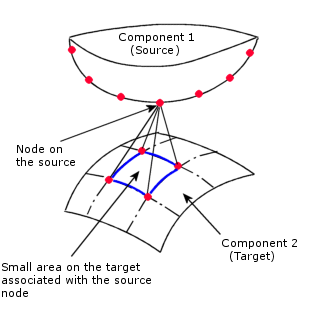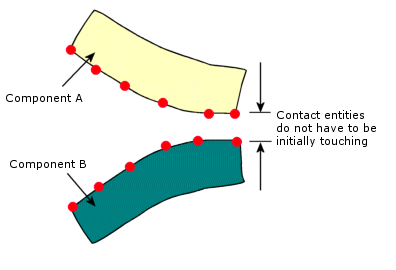Facts about the Node to Surface
contact option:
- Does not require that the faces are initially touching.
- Does not require common mesh nodes between the source and target
faces.
- Allows vertices, edges, and faces as Set
1 entities.
- This contact formulation is available for static, nonlinear, and
thermal studies. For static and nonlinear studies, this contact type prevents
interference between the source and target faces but allows them to move away from
each other to form gaps. For thermal problems, you can use this option Thermal
Resistance.
- Although Surface to Surface
contact is more accurate in general, the Node to
Surface option gives better results if the contact area between the
two faces becomes very small or reduce to a line or point.
- The figure shows a possible deformation of two faces with
independent meshes.

- For each node on the source, the software assigns one or more
element faces on the target.

The program selects the candidates for
source and target faces internally. They are defined using the Set 1 and Set
2 entities in the Local
Interactions PropertyManager.